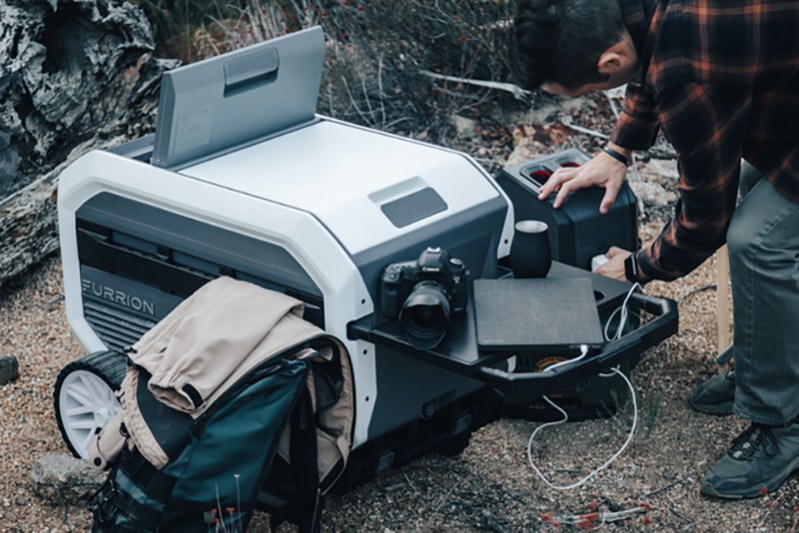
The concept of the cooler has changed little in the last few decades. Sure, brands like Yeti and Pelican have adopted newer, fancier, pricier materials. But, most coolers are still just big, bulky plastic containers for keeping our beer, Zima, and meats cold on the go. Furrion wants to upend traditional cooler design with a radical solar-powered alternative ready to go just about anywhere for however long you need it.
Furrion is touting the eRove as “the cooler to end all coolers … [a] battery-powered, solar rechargeable cooler that’s perfect for camping, the apocalypse, and everything in between.” That’s a tall promise, but the cooler’s built-in technology seems up to the task. Its strength is in its versatility as it’s capable of staying ice cold in four ways. The onboard compressor can be powered with Furrion’s optional ePod battery for up to five days without ice or 14 days with ice. For stationary cooling, like at a lakehouse or a campground with shore power, it’ll run off a standard electric outlet indefinitely. It can also keep cool on the go using any standard 12V DC outlet like those found in your car or SUV. For real, go-anywhere cooling, it’ll even run indefinitely with Furrion’s optional solar charging system. Just add sun.
With all of its clever electronics and the optional 100W solar panel, the eRove is less of a cooler and more of a premium front-country appliance. Touch temperature control allows for keeping foods precisely chilled between minus 8 degrees to plus 50 degrees Fahrenheit. That cooling power can also be diverted to charging your mobile gear. It features two USB ports, one fast-charging USB port, and even a wireless charging pad to keep your smartphone and digital camera batteries topped up. With room for up to 72 cans and built-in features like a cutting board and cup and umbrella holders, it can easily serve as your culinary basecamp away from home.
The Furrion eRove is available for pre-order on Indiegogo with an early bird price of $649 (a $350 savings off the $999 retail price). TA variety of combo packs that include add-ons, like the wheel kit, ePod battery, power station, and compatible solar panel, are also available at a deep discount ahead of eRove’s official launch. The company expects to start shipping in January 2021.
If traditional, non-electric outdoor gear is more your speed, check out our roundup of the best coolers.


